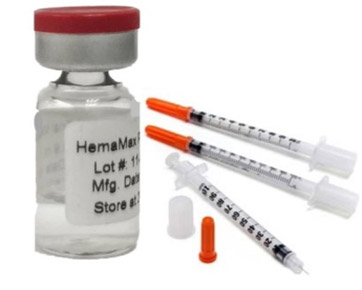Business Overview.
-
Headquarters
Los Angeles
-
Funding
$76 Million non-dilutive capital invested.
-
Clinical Stage
Phase 3-ready in Cutaneous T Cell Lymphoma (with radiotherapy)
Phase 2-ready in Non-Small Cell Lung Carcinoma and Melanoma (with radiotherapy and immunotherapy, anti-PD-1 antibody)
Phase 2-ready in Diffuse Large B cell Lymphoma (with chemotherapy, R-ICE or R-DHAP)
First-in-Class Immunotherapeutic
Improves Efficacious & Reduces Toxicity of Standard of Care
Product Description

HemaMax: (Interleukin-12, IL-12) stimulates hematopoiesis & potent immune responses.
-
Efficacious as an immunotherapeutic in oncology & HSARS
Clinical Problem
Immunosuppression: Tumor cells suppress endogenous IL-12 production from antigen presenting cells (eg dendritic cells).
Clinical Solution
Immunoactivation: Exogenous HemaMax restores pleiotropic, anti-tumor effects thereby generating durable responses.
Value Proposition
Optimal combination agent: Improves efficacy & reduces toxicity in combination with standard of care therapies
-
Significant advantages of HemaMax over other interleukins recently valued as potential combination agents
Compelling pre-clinical & clinical results
-
Proven efficacious in several murine models & canine cancer patients
-
Phase 2 in CTCL combination with radiation demonstrates robust, sustainable responses
-
71% of CTCL patients showed duration of response at 8 months when combined with radiation vs. 21% of radiation only treated patients
HemaMax eliminates the toxicity & poor pharmacokinetic (PK) & pharmacodynamic (PD) properties of historical IL-12
-
Unique, infrequent low dosing prevents tachyphylaxis (decreased immune response)
-
Distinct glycosylation results in improved PK/PD
Market Opportunity
$43 billion immuno-oncology market, 14.6% CAGR
Potent immune response stimulator proves efficacious in combination with chemotherapy, radiation & other immunotherapeutics
-
Mechanism conserved across multiple tumor types allowing for numerous indications
